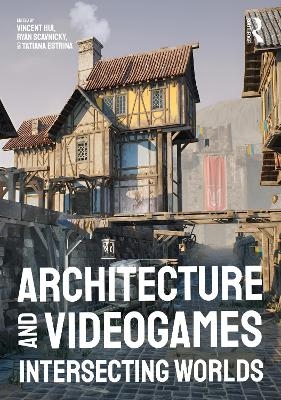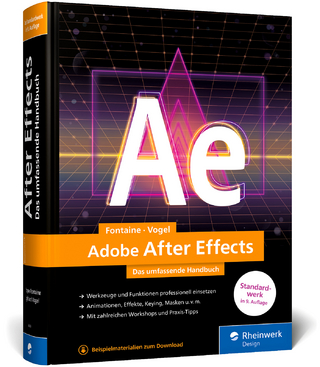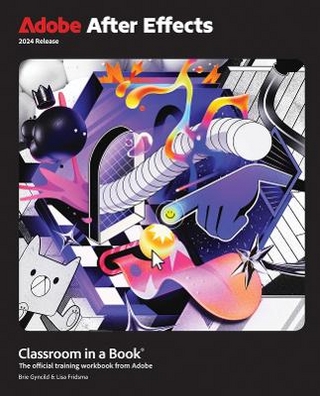
Architecture and Videogames
Routledge (Verlag)
978-1-032-52887-8 (ISBN)
- Noch nicht erschienen (ca. Dezember 2024)
- Versandkostenfrei innerhalb Deutschlands
- Auch auf Rechnung
- Verfügbarkeit in der Filiale vor Ort prüfen
- Artikel merken
This book explores and affirms the emergent symbiosis between videogames and architecture, including insights from a diverse range of disciplines.
With contributions from authorities in both architecture and videogame industries, it examines how videogames as a medium have enlightened the public about the built environments of the past, offered heightened awareness of our current urban context, and presented inspiration and direction for the future directions of architecture. A relatively nascent medium, videogames have rapidly transitioned from cultural novelty to architectural prophet over the past 50 years. That videogames serve as an interactive proxy for the real world is merely a gateway into just how pervasive and potent the medium is in architectural praxis. If architecture is a synthesis of cultural value and videogames are a dominant cultural medium of today, how will they influence the architecture of tomorrow?
Heavily illustrated with over 200 images, the book is split into seven sections: Cultural Artifacts, Historic Reproduction, Production Technologies, Design Pedagogy, Proxies and Representation, Bridging Worlds, and Projected Futures.
The definitive resource on consolidating these interconnected fields, this book will mobilize the current generation of designers to explore and advance this synthesis.
Vincent Hui is a full professor at Toronto Metropolitan University and has been awarded several teaching distinctions across different universities. He has taught a variety of courses, ranging from design studios to advanced architectural computing and digital fabrication. A consummate collaborator, his research work and creative outputs examine intersections between architecture and other disciplines including biology, robotics, artificial intelligence, and videogame technologies. His teaching, creative projects, scholarly output, and outreach initiatives have merited his induction as a Fellow of the Royal Architectural Institute of Canada. Ryan Scavnicky (Scav) is a storyteller creating discourse through experimental media practice Extra Office. Using memes, TikToks, op-eds, group chats, Twitch broadcasts, Discord servers, print media, and more, Scav challenges the status quo of disciplinary content. His most recent endeavor includes collaborating with the renowned photographer Iwan Baan on their upcoming book Bread and Circuses: Rome and Las Vegas, set to be released in spring 2024. Scav now serves as an assistant professor at Marywood University School of Architecture, spearheading the groundbreaking Bachelors of Virtual Architecture program. Tatiana Estrina is a designer and creative coder, currently pursuing a graduate degree at MIT. Merging her interests in architecture and computer science, her work delves into digital realms, design computation, and the horizon of futurological fabulation.
Part 1: Cultural Artifacts 1.1. Baby, What’s ROM? The Architectural Historian as Retro-Gamer 1.2. The Interplay of Architecture and Gameplay in Dark Fantasy, Urban Open-World and Post-Apocalyptic Videogames 1.3. On his roles as founder of Molleindustria and Experiential Game Design Instructor at Carnegie Mellon 1.4. Foundational Pixels: How Architecture First Entered Videogames 1.5. Architecture Manifesting Videogames Manifesting Architecture: A Cultural Artifact Loop 1.6. Newest Basilica of Guadalupe Part 2: Historic Reproduction 2.1. Visualizing the Indigenous Architectural Past through Virtual Reality & Gaming 2.2. On his role as World-Design Director at Ubisoft 2.3. Restorative Heritage: Videogames as Participatory Storytelling 2.4. On his roles as Professor and Research Fellow 2.5. Mantle Site Workflow Part 3: Production Technologies 3.1. Past Present Future: The emerging use of digital tools for heritage architecture in the creation of alternate realities 3.2. On their roles as Architect and Design Computation Specialist and Associate Director at Arup Architecture 3.3. On his role as Computer Graphics Supervisor at Proximodo, a Visual Effects House 3.4. Full Circle: Leveling Up Building Digital Twins with Videogames 3.5. ERA Production Workflow Part 4: Design Pedagogies 4.1. Infinite Play: Video Games as Teaching Tools 4.2. Past Present Future: The emerging use of digital tools for heritage architecture in the creation of alternate realities 4.3. Rik Eberhardt: On his role as Program Manager for the MIT Game Lab 4.4. Comparing Pedagogies of the Architectural and Game Design Classrooms 4.5. Design Pedagogy Example Projects Part 5: Proxies and Representation 5.1. Game Worlds as Real Worlds 5.2. Building Black Joy in a SIMulated Realm 5.3. On her role as architecture professor and critic at MIT and director of the Critical Broadcasting Lab 5.4. Unraveling the Challenges of Reimagining Historical Virtual 3D Game Environments 5.5. Be.longing XR Part 6: Bridging Worlds 6.1. Oh Shit I Took Both Pills, and Now Architecture is NO LONGER Frozen Music!! 6.2. Court Sin, Peter Marshall: On their roles as Creative Director and Studio Director of Architecture at FORREC 6.3. Virtually Reality: “Viva las [Videogame] Vegas” 6.4. Games of Deletion Part 7: Project Futures 7.1. On the Possibility of Enaction within Synthetic Worlds 7.2. Reversibility and Atmosphere: The Shared Philosophical Implications of Architecture and Video Games 7.3. Paper Visions: Theorizing Virtual Architecture 7.4. Liam Young: On his roles as MS Fiction and Entertainment Coordinator at Sci Arc, Designer, Director and Producer
| Erscheint lt. Verlag | 30.12.2024 |
|---|---|
| Zusatzinfo | 4 Line drawings, black and white; 30 Halftones, color; 199 Halftones, black and white; 30 Illustrations, color; 203 Illustrations, black and white |
| Verlagsort | London |
| Sprache | englisch |
| Maße | 174 x 246 mm |
| Themenwelt | Kunst / Musik / Theater |
| Informatik ► Grafik / Design ► Film- / Video-Bearbeitung | |
| Informatik ► Software Entwicklung ► Spieleprogrammierung | |
| Technik ► Architektur | |
| Technik ► Bauwesen | |
| ISBN-10 | 1-032-52887-7 / 1032528877 |
| ISBN-13 | 978-1-032-52887-8 / 9781032528878 |
| Zustand | Neuware |
| Haben Sie eine Frage zum Produkt? |
aus dem Bereich


